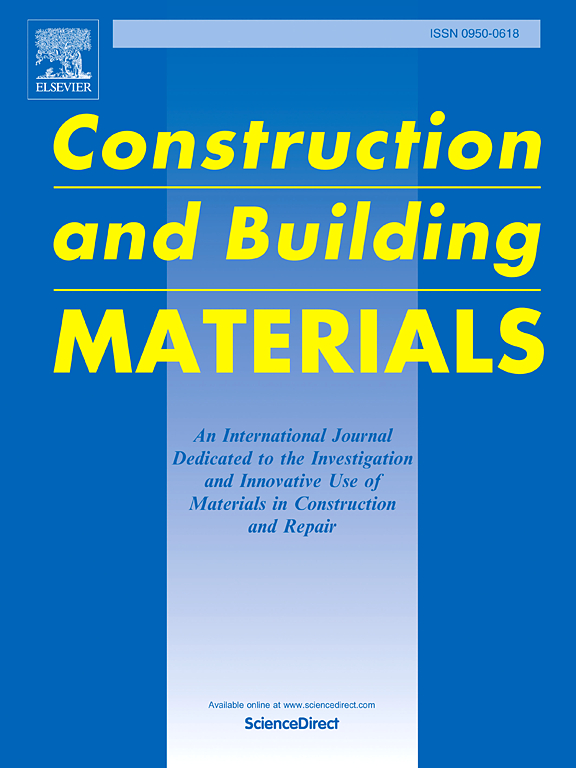Temperature kinetics of calcium-activated burnt coal cinder-based geopolymer: Reaction medium and curing temperature
IF 7.4
1区 工程技术
Q1 CONSTRUCTION & BUILDING TECHNOLOGY
引用次数: 0
Abstract
In various regions and seasons, the impact of environment temperature on the reaction medium must be considered in industrial applications and how to determine the optimal curing system to ensure product performance. Within this context, this study focused on the temperature kinetics of calcium-activated low-activity solid waste-based geopolymers and assessed the impact of reaction medium temperature (RMT) and curing temperature (CRT). The influence of RMT during preparation was determined by the hydration heat and slurry fluidity. Moreover, a prediction-judgment model for geopolymer properties, using water absorption as an indicator, was developed to inform CRT system selection. Techniques like XRD, TA, and BJH analysis verified the model's judgment on geopolymer phase and structural changes at various CRT. Results showed the optimal RMT was about 20℃, with deviations reducing slurry workability. During curing, higher CRT accelerated chemical reactions and microstructure evolution. Nevertheless, the prediction-judgment model suggests that there exists a curing time threshold under specific CRT. Curing time beyond this threshold may even have detrimental effects. Given the continuity of temperature, it is essential that changes in threshold values are also continuous. To depict this continuous change, extended mathematical thought is used to map the values on the number line onto the "loop". Changes in CRT cause negatively correlated changes in the threshold within this loop. When CRT is below the critical level, the threshold crosses the top of the loop to become negative, signaling geopolymer structural degradation. Meanwhile, the micro-mechanism analysis shows that proper increase in CRT boosts the geopolymerization rate, promoting rapid and extensive formation of gel and yielding denser surfaces with more developed microstructures, thereby enhancing geopolymer properties. In contrast, lower temperatures lead to looser structures and many unreacted particles, showing slower microstructural development.
求助全文
约1分钟内获得全文
求助全文
来源期刊

Construction and Building Materials
工程技术-材料科学:综合
CiteScore
13.80
自引率
21.60%
发文量
3632
审稿时长
82 days
期刊介绍:
Construction and Building Materials offers an international platform for sharing innovative and original research and development in the realm of construction and building materials, along with their practical applications in new projects and repair practices. The journal publishes a diverse array of pioneering research and application papers, detailing laboratory investigations and, to a limited extent, numerical analyses or reports on full-scale projects. Multi-part papers are discouraged.
Additionally, Construction and Building Materials features comprehensive case studies and insightful review articles that contribute to new insights in the field. Our focus is on papers related to construction materials, excluding those on structural engineering, geotechnics, and unbound highway layers. Covered materials and technologies encompass cement, concrete reinforcement, bricks and mortars, additives, corrosion technology, ceramics, timber, steel, polymers, glass fibers, recycled materials, bamboo, rammed earth, non-conventional building materials, bituminous materials, and applications in railway materials.
 求助内容:
求助内容: 应助结果提醒方式:
应助结果提醒方式:


